Updated: 2023.4.26
Detox Cafe Felicidad
35-10, Itoman Nishikawa, Okinawa
Fusion restaurant offering salads, curries, bibimbap, acai bowls, cakes and baked sweets. Also sells some packaged products like soy flour, hemp seeds, and nuts.
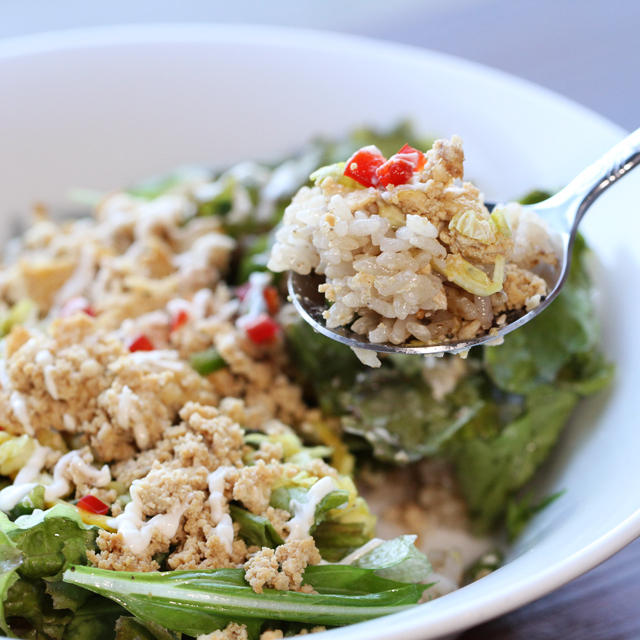
Gajimaru
330-1 Maeda, Onna, Kunigami District, Okinawa
Vegan restaurant and coffee stand, the menu features several different vegan ramens with optional gluten-free noodles and a daily special. Also offers an extensive dessert menu with raw cakes and raw ice cream sandwich. Has soy/almond/oat milk options for coffee. The menu is in both English and Japanese and the staff can speak English. Kid-friendly.
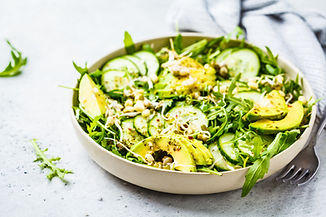
Lala Zorba
Matsuo 2-2-32 2F, Naha
Vegan restaurant. Makes dishes with herbs and spices and with influence from different countries like Tibet and Vietnam. Sample dishes such as fried soy meat, stir fried noodles, spring rolls, and dumplings. Uses organic Okinawa grown vegetables. Last orders for lunch at 2:30pm and tea at 4:30pm. Reservations only at night. Vegan ethnic and Italian course meals, party plans available. Located one minute away from Naha City/Kokusai Dori/Matsuo.
Ukishima Garden
2-12-3 Matsuo, Naha
Japanese and fusion cuisine influenced by the Ancient Ryukyu period. Serves a 4-course lunch plus meal combos, and later a 5 or 6 course dinner. Menus include millet hamburg streak, millet carbonara pasta, veggie taco, gyoza, tan-tan ramen, cakes and soft serve ice cream. No msg or gmo. Park at the attached garage, and validate your receipt with the restaurant. Currently temporarily open at weekends; take out available. Note: Temporarily closed February 2023 - please send updates to HappyCow.
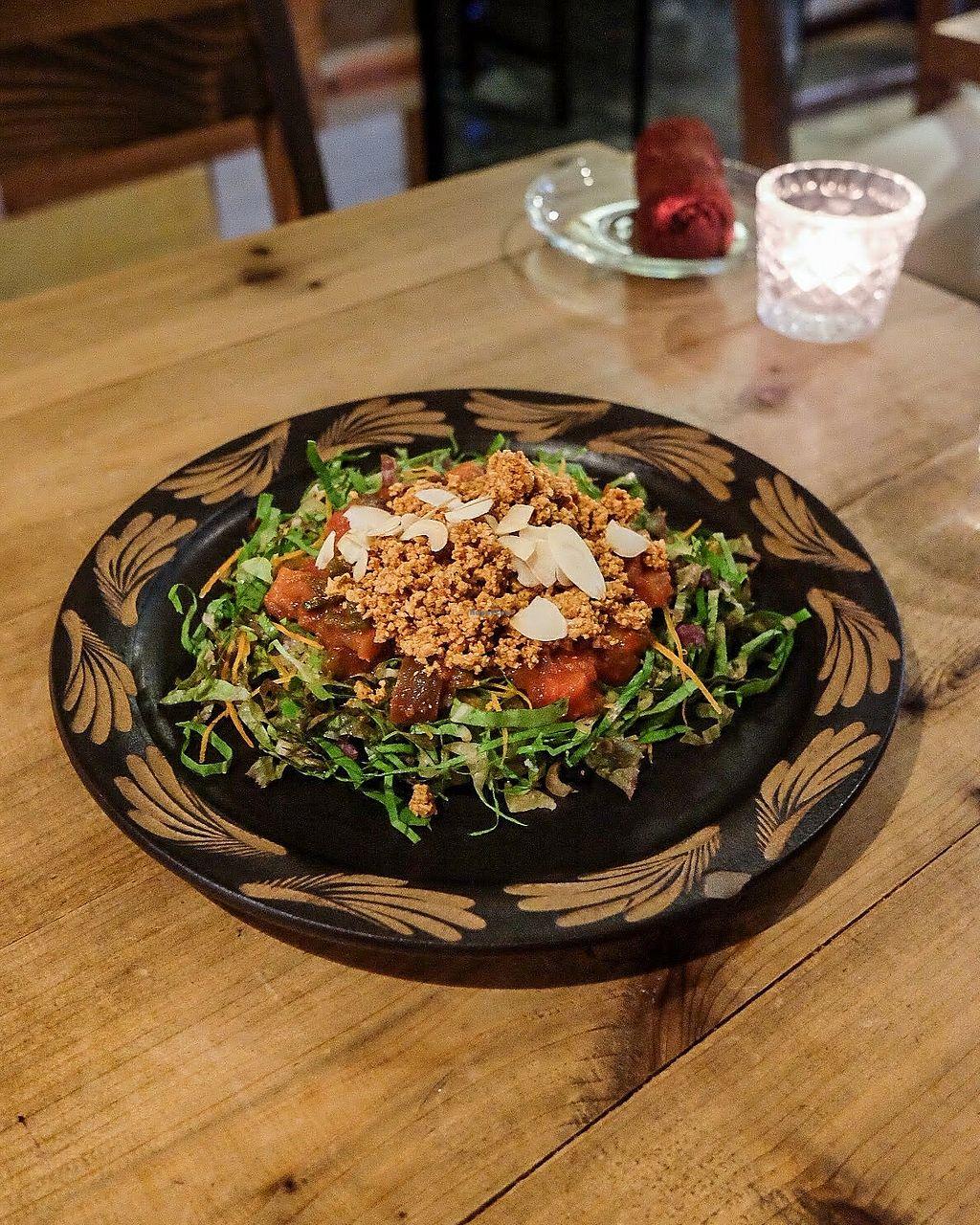
Mana
1-6-9 Tsuboya, Naha
Natural food cafe in Naha. Serves vegan food, bakery goods, coffee. Lunch from 11am-3pm. Sells sweets for take-out until 4pm. Open Thu-Sun 11:00am-3:00pm.
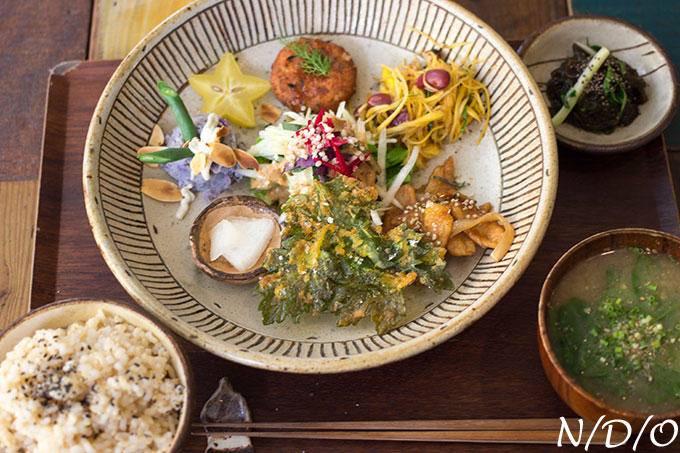
Kintsubo Shokudo
Tsuboya 1-7-9, Okinawa
金壷食堂 Chinese buffet restaurant is located near Pottery Street and the Makishi Public Market (maybe a bit difficult to find though). Offers all-you-can-eat buffet priced per person. Most dishes are vegan but better to ask the chef to confirm on the individual dishes. Causal set up. Open Mon-Sat 8:00am-3:00pm, Sun 8:00am-12:00pm.
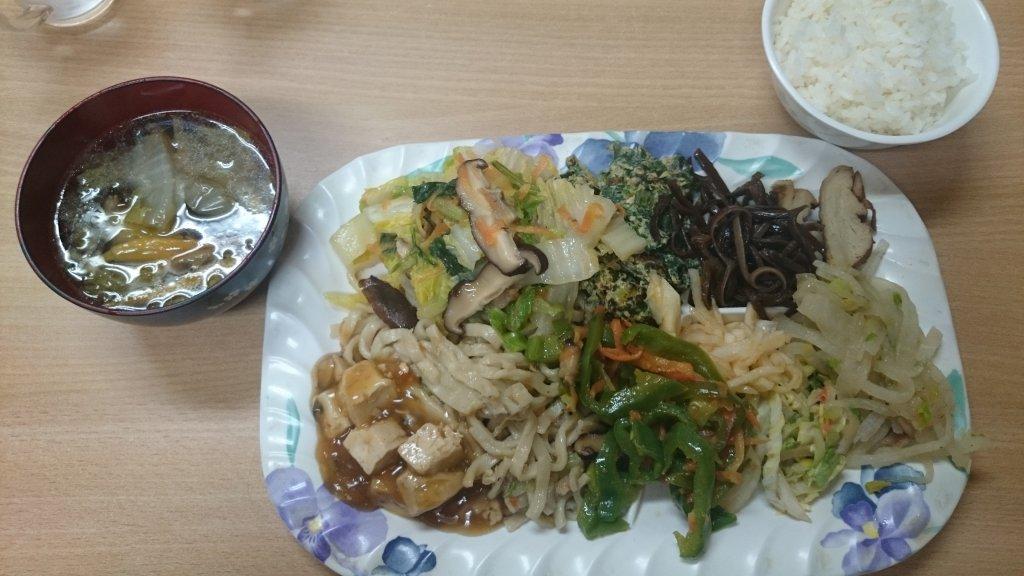
Imacoco
Takahara 2-6-37, Bella Vista 901, Okinawa
Family-owned cafe on the 9th floor of an apartment building in Takahara. Made its menu fully vegan and gluten-free in 2016. Offers a daily lunch plate set plus taco rice, curry, sweets, and drinks. There is a play area for kids, and the space has a view over the city and ocean.
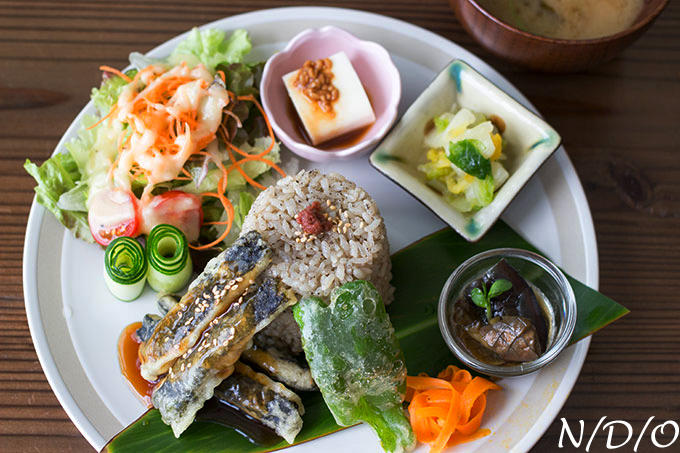
Tenbusu Organic Market
2-chōme-2-8 Hiyagon, Okinawa
Health food store. Offering natural and organic selections of western and Japanese foods, plus some prepared foods such as bento available daily. Has many vegan products.
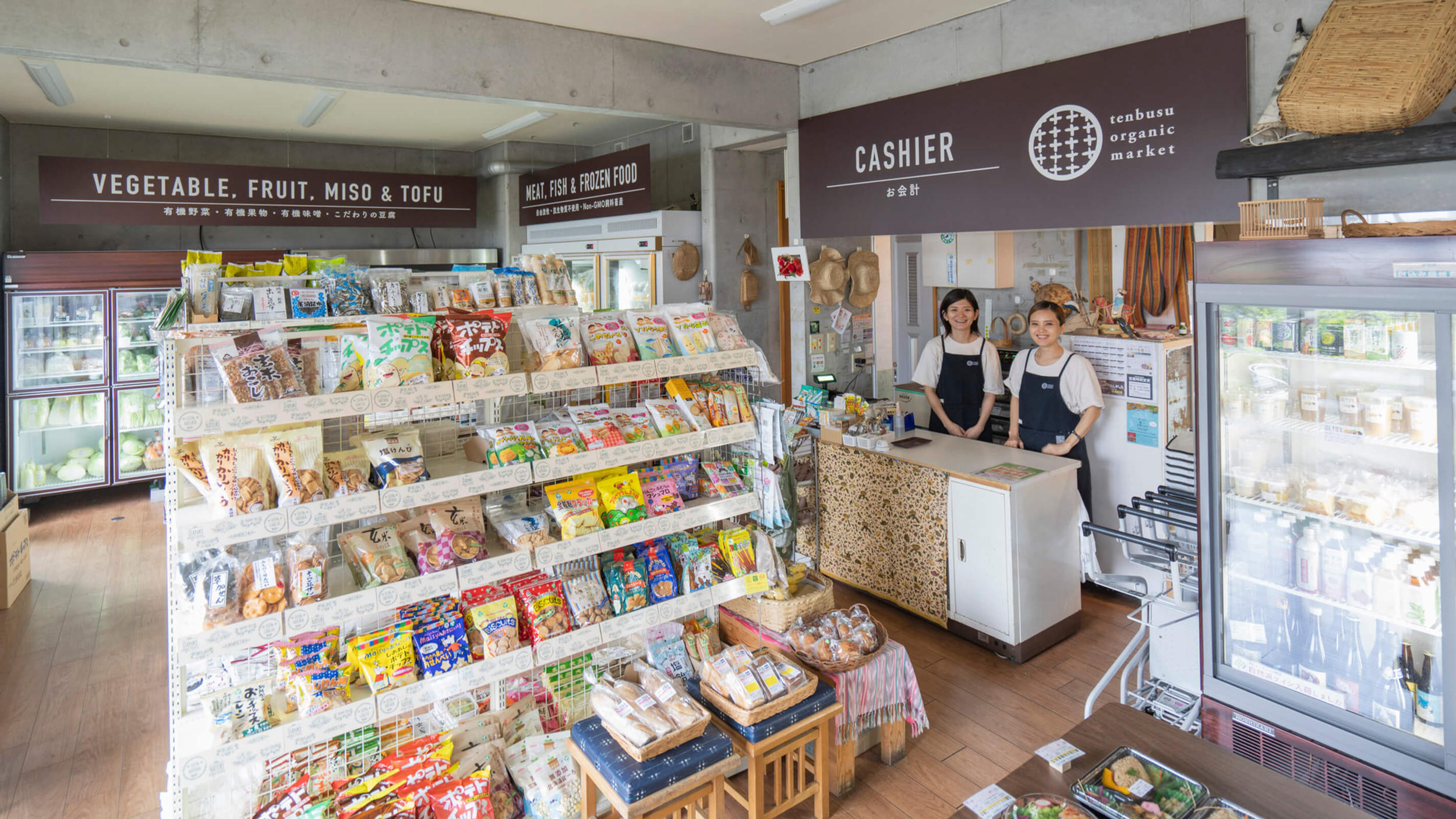
And if you are interested in...
"Living seaside"
"Moving to Okinawa"
"Residence in Okinawa"
"Okinawa Investment property"
"Selling and Buying property in Okinawa"
We are happy to help you. Please feel free to contact us!
Updated: 2023.4.17
Eisa (Okinawan: エイサー, Eisaa) is a form of folk dance originating from the Okinawa Islands, Japan.
This folk entertainment originated from events that centered around the harvesting of rice, such as giving thanks for the crops, and festivals to pray for abundant harvests.
These events and festivals have been passed down through generations and communities. The main forms of folk entertainment are eisa and shishimai, performances that combine costumes, music, and dance.
Eisa is typically performed during the Obon festival, a holiday where families honor their ancestors. In Okinawa, it is held from July 13-15 of the lunisolar calendar (which typically falls around late August on the solar calendar).
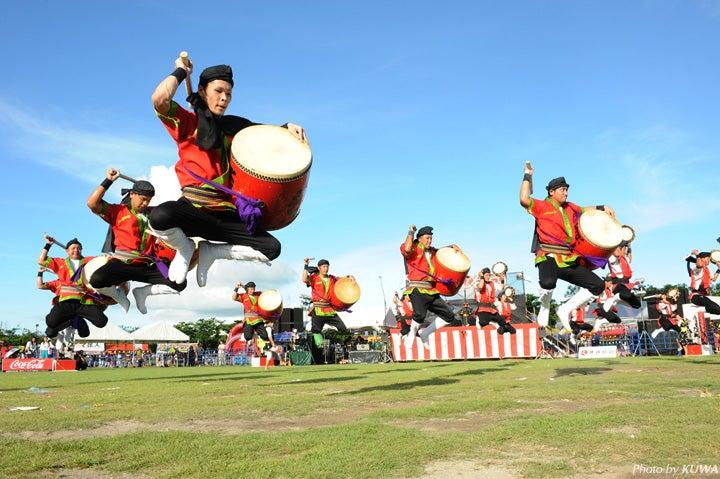
Shishimai (lion dance) is the dance known to have the power to ward off evil spirits and bring good fortune and prosperity to the region. The tradition has been passed down through the generations and the Shishimai is done annually to ensure prosperity.
The root of the lion dance tradition comes from China, it has been absorbed into Japanese culture. The styles of lion dancer vary by their region. The performers on Okinawa often dance to the "sanshin," while dancers from mainland tend to perform to the sounds of flutes and drums.
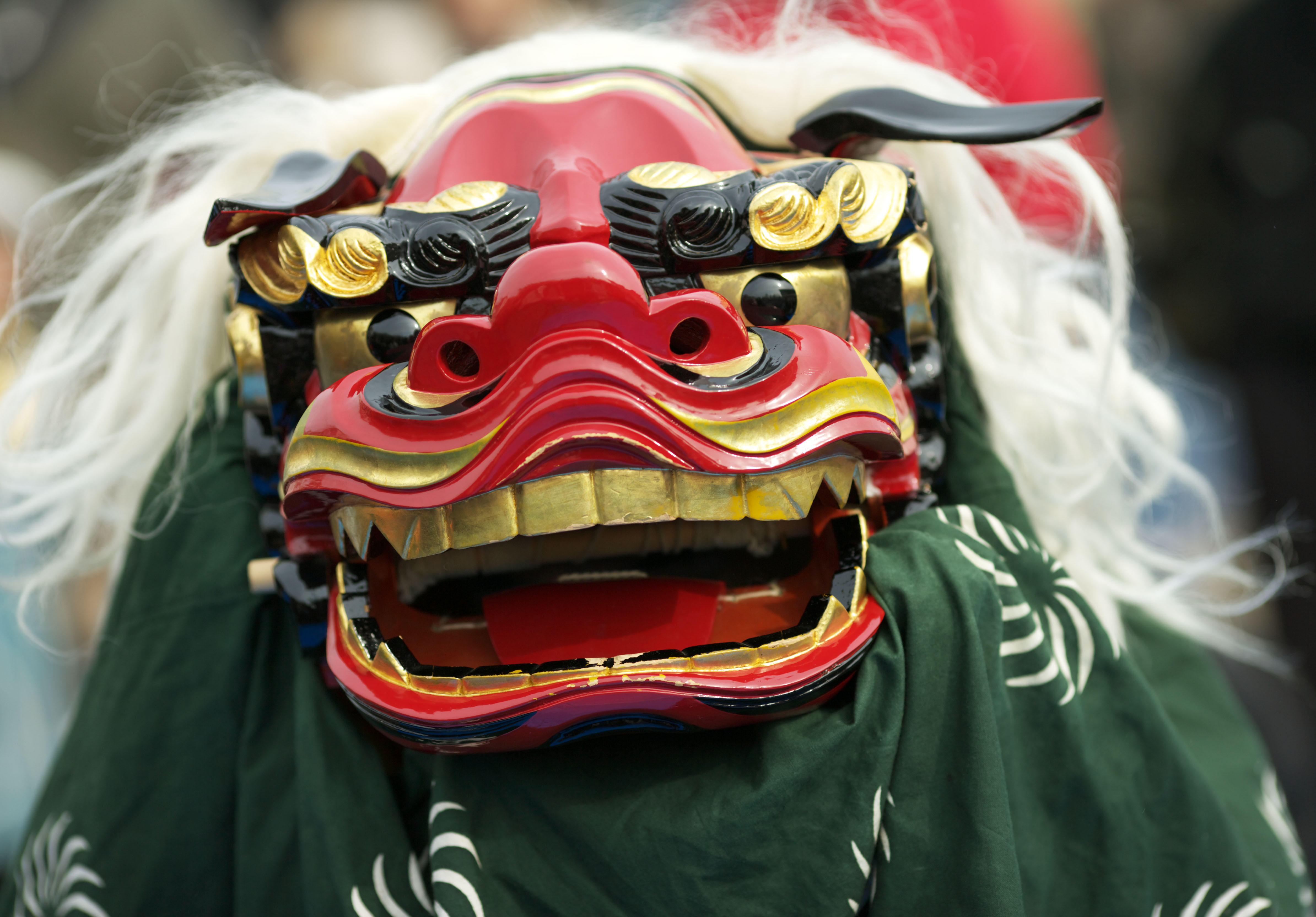
The lion requires two people to operate them; one person handles the head and front paws, and the other manages the rear paws and tail. The performances are lively, comical, acrobatic, and amazing. You'll absolutely love the Shishimai.
And if you are interested in...
"Living seaside"
"Moving to Okinawa"
"Residence in Okinawa"
"Okinawa Investment property"
"Selling and Buying property in Okinawa"
We are happy to help you. Please feel free to contact us!
Updated: 2023.4.12
Do you know that Ryuichi Sakamoto who was the world-famous composer had strong concern about Okinawan music and peace issues?
3 years ago he joined the charity concert conducted at Ginowan city as the year of 75 years later of the end of war, and the earnings from the concert was donated to "Himeyuri Peace Museum".
I introduce you a beautiful song Ryuichi Sakamoto and his old friend Misako Koja made for nature and peace of Okinawa.
Ryuichi Sakamoto collaborated with Unaigumi, an Okinawan folk music group composed of four women.
After "Undercooled" was originally released, Koja, singer of Unaigumi and old music friend of Sakamoto and her producer/husband reached out to him to write lyrics and a song in Okinawan over the track.
The title, "undercooled" came in response to the heated political situation in the world after the 9.11 attacks and during the ensuing Iraq war. Sakamoto's message was clear: "the world needs to cool down." A different, but equally important situation has been simmering in Okinawa around the new construction of an American military base from Futenma to Henoko.
Thus the new version of "undercooled" was created to restate the original message to "cool off." Sakamoto and Unaigumi created this new version of "undercooled" with the hope of creating a peaceful Okinawa, Japan, and the world at large using the power of music and song.
The word "Miruku Yugafu" is an ancient Okinawan term meaning "an ideal, peaceful, and prosperous world which the Maitreya will bring."
The lyrics, sung in the Okinawan dialect, praise of nature and evoke the pathos of war.
In the interlude, the listener is presented with singer, UA, and her children speaking about humans and the universe.
All proceeds, excluding the fees and expenses of the label, will be donated to the Henoko Fund* to support the ongoing struggle of the local citizens affected by the construction of the new replacement military base.
https://youtu.be/OQNTcoayZ3E
Lyrics
The beauty of the sea, the beauty of the blue sea
The eternal treasure, eternal treasure of our island
The depth of the sky, the depth of the blue sky
Forever, forever our Okinawa
The beauty of a flower, the pure song of a bird
I can hear the feelings, I can hear the feelings of a beautiful island
The splendor of human, the splendor of it's soul
Soul of truth, the spirit of life, the sprit of life
It is Okinawa, where the gods dwell
Please protect, protect the peace of the world
The feelings of the wave, the feelings of the sun and wind
I can hear the sorrow, I can hear the sorrow of the war-torn world
The sorrow of the war-torn world, which we can never forget
Let it be told, let it be told to the children
The light of the star, the light of our earth
Make a wish, make a wish for the utopia
(The world map) does not show this small island
The feelings of peace are very deep, very deep
Human life are the grace from heaven
The treasure of life, the treasure of life is eternal
The shape of the earth will not change easily
What changes are the minds of the people, the minds of the people
Stop fighting between people and people
Let's sing and hope our true feelings for the peace of the world

Updated: 2023.4. 4
The Ryukyu dog, neither fearful nor aggressive, intelligent, alert, and quiet.
The Ryukyu dog originated in Okinawa. The breed was originally used to track and bay Ryukyu wild boar in packs. Much of the Ryukyu dog's history has been destroyed and misplaced, hence it is very sparse. The purebred Ryukyu dog was thought to be extinct after World War II due to food shortages and crossbreeding with Western dogs. In the early 1980s, Yoshio Aragaki, the founder of the Ryukyu dog Hozonkai, felt a strong urge to save the breed when he managed to find purebred Ryukyu dogs up in Yanbaru.
It is believed that years of living in the rainforest is why the Ryukyu dog has a dewclaw on the back of the foot. Because of this claw, they can climb trees. It has been speculated that this would have been evolutionarily favourable to them because of the high incidence of tsunami in Okinawa; they could climb trees quickly to evade the floods. However, this is unlikely to be true as only a small percentage of Ryukyu dog actually have working rear dewclaws. The preservation society sees the dewclaws as a throwback from hundreds of years ago when the dogs were genetically closer to wolves, and that the claws are used more often to brake when running.
The Ryukyu dog is described as a quiet dog that is capable of hunting in a group or on its own. They are agile, brave and not sensitive. They are natural hunters and have a high prey drive. Despite being a hunting dog, they are obedient, playful and good with children. They cannot be trusted around small animals, but are usually okay with cats if introduced to them early on. They can be escape artists and have amazing climbing abilities, especially those with working rear dewclaws, who can climb vertical trees. They are very smart and so require a lot of mental stimulation as well as physical stimulation.
Despite being bred, raised and used as a hunting dog for many years, they have been described by the Ryukyu dog Hozonkai as ideal for therapy dog work because of their calm, placid temperament when trained correctly; however, due to their high prey drive they are not suitable for disability assistance work.

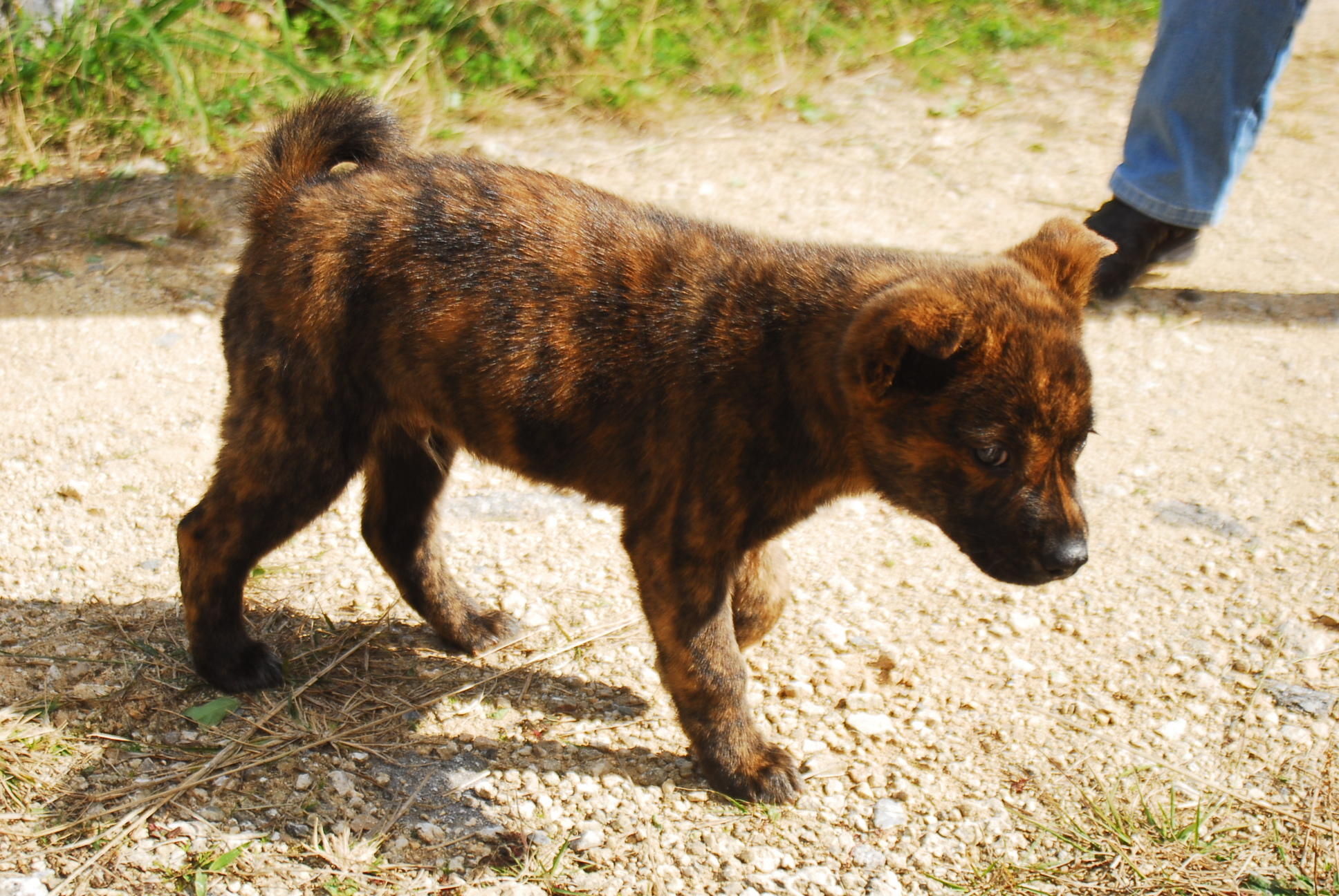
And if you are interested in...
"Living seaside"
"Moving to Okinawa"
"Residence in Okinawa"
"Okinawa Investment property"
"Selling and Buying property in Okinawa"
We are happy to help you. Please feel free to contact us!
Updated: 2023.4. 2
Habushu (ハブ酒) is an awamori-based liqueur made in Okinawa, Japan. Other common names include Habu Sake or Okinawan Snake Wine.
A main distributor of habushu uses around 5,000 habu per year. The distillery uses crushed rice and Koji mold to produce the awamori that goes into the habushu. The awamori is first mixed with herbs and honey giving the clear liquid a yellow hue. A pit viper is then inserted into the liquid and stored until consumed. It is a typical practice to age the awamori for a long period of time. The alcohol helps the venom to dissolve and become non poisonous. Some brands of habushu come with the snake still inside the bottle which is mixed with honey and herbs.
There are two methods of inserting the snake into the alcohol. The maker may choose to simply submerge the snake in the alcohol and seal the bottle, thus drowning the snake. Alternatively, the snake may be put on ice until it passes out, at which point it is gutted, bled and sewn up. When the viper is thawed and awakens, it will quickly die in an aggressive striking manner, which is what most producers look for. The manufacturer will then put the habu in an ethanol bath for a month to preserve it. To continue the process, the habu is put in a 59% alcohol mix for 40 days and finally put in a 35% awamori mix to prepare for consumption. Removing the intestines of the snake, as in the second method, is thought to decrease the drink's particularly unpleasant smell.
A habu snake is able to mate for as long as 26 hours, which causes some to believe that a drink of habushu may help sexual dysfunction in men. A common superstition is that these strengths are passed on to those who drink habushu.
Habu sake is usually consumed along with supper at restaurants and bars mixed in a ratio of three parts of water and seven parts of alcohol in a traditional Japanese choku. Lemon and salt can also be added to the drink to enhance its flavor.
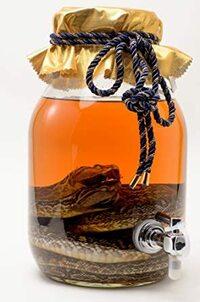
And if you are interested in...
"Living seaside"
"Moving to Okinawa"
"Residence in Okinawa"
"Okinawa Investment property"
"Selling and Buying property in Okinawa"
We are happy to help you. Please feel free to contact us!